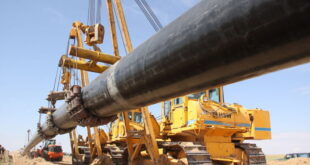China’s appetite for crude oil imports is stronger than expected this year. up 13.9% year-on-year in H1 2017 to 212 million tonnes (8.5 million b d). However. the main beneficiary of China’s ongoing surge in crude imports is not its largest partner region. the Middle East. but second tier partners such as West Africa. the former Soviet Union and Latin America. The growth in trades from the Atlantic Basin have been particularly important to the tanker sector in shoring up badly eroding rates by boosting long-haul voyages. which act as an accelerator to seaborne demand.
The strength of China’s crude oil import growth is such that it is set to displace the United States as the largest exporter of crude oil this year for the first time. although it will be a close-run thing with imports into the United States also surging this year. up 8.5% year-on-year to 211 million tonnes (8.46 million b d) just behind the total for China.
The Middle East accounted for just under half of China’s crude oil imports in 2016. However. the OPEC-led deal to cut production has disproportionally impacted on Middle Eastern exports and allowed other exporting regions – particularly within the Atlantic Basin to grab market share. Based on H1 2017 data. Middle East exports to China are expected to be flat this year. Iraq has been the largest Middle Eastern supplier. up 6% year-on-year.
Of the top 10 exporters to China in the first half of the year. Russia (11% year-on-year). Angola (22%). Brazil (48%). and Venezuela (14%) have been the star performers. Although Russian exports to China are mainly drawn from the Pacific region. it too has provided long-haul cargoes sourced from the Black Sea.
Interestingly. the deal to cut production has been one of the key drivers of China’s crude oil import push with fears of a shortage of crude oil supplies into the Asia area encouraging China to further concentrate on building up its crude oil inventories. Record refinery throughputs have been another important driver with teapot refiners raising their runs after receiving additional crude import quotas. Declining domestic crude oil production is yet another factor behind the rise in imports. although production is expected to be flat or slightly positive this year.
High domestic product stock levels and the prospect of lower Q3 refinery runs due to seasonal maintenance suggest caution when forecasting crude oil demand. but as the second chart (above) indicates. China’s refiners are continuing to make strong inroads in expanding their export markets. In H1 2017. product exports were up by 10.3%. If there is any concern over future levels of Chinese imports it is the prospect that further strategic stockpiling could ease.

 Iran Energy News Oil, Gas, Petrochemical and Energy Field Specialized Channel
Iran Energy News Oil, Gas, Petrochemical and Energy Field Specialized Channel



